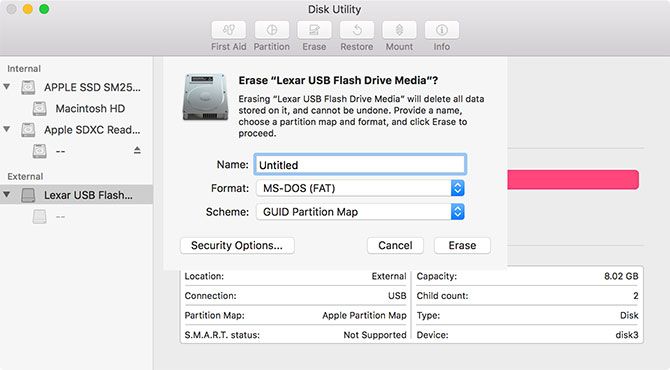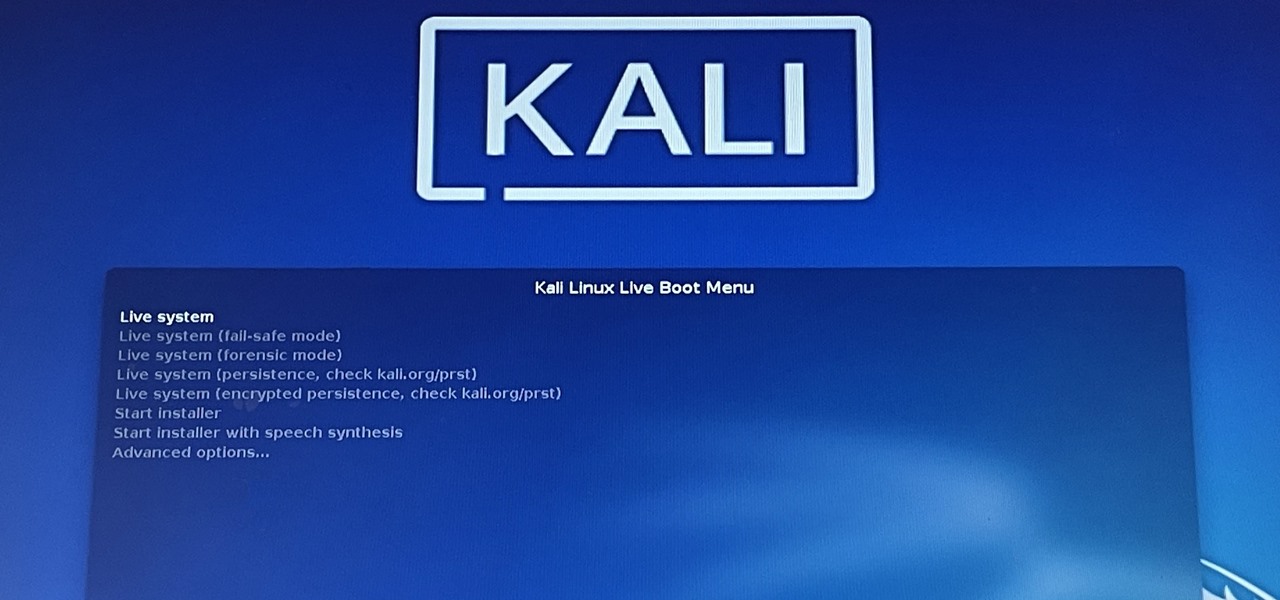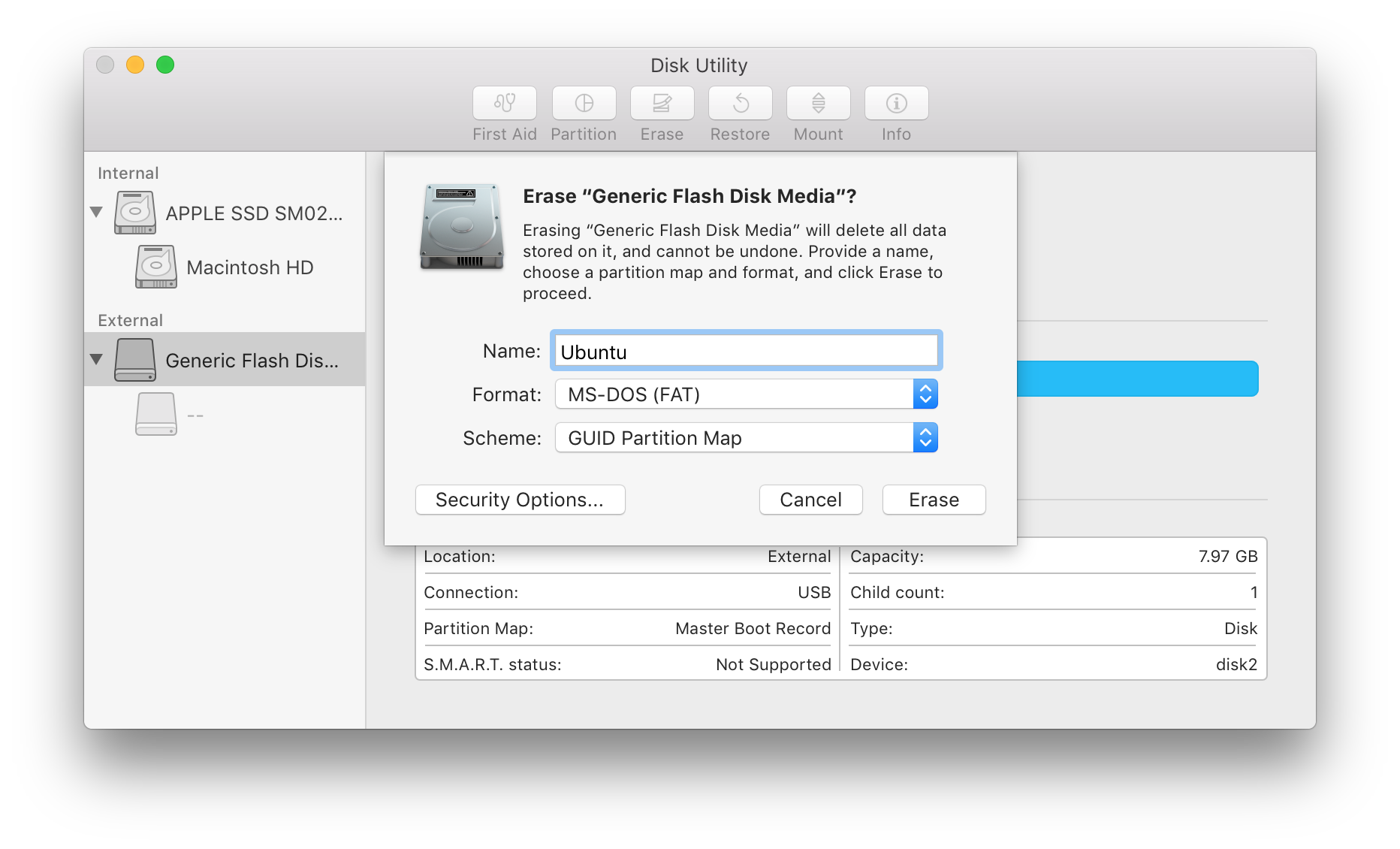

- #LINUX LIVE USB FOR MAC HOW TO#
- #LINUX LIVE USB FOR MAC INSTALL#
- #LINUX LIVE USB FOR MAC SOFTWARE#
- #LINUX LIVE USB FOR MAC PASSWORD#
- #LINUX LIVE USB FOR MAC ISO#
With Fat32 and MBR 3) Run Mac Linux USB Loader and select the Kali Iso The basic steps areġ) Download Kali Linux 2) Using Disk Utilities on Mac to format a USB drive There is a video here that has step by step instructions for the Mac Linux USB Loader, but it's pretty straight forward to use. That method is to use the Mac Linux USB Loader on a Mac to create the bootable USB. So far, I've only found one method that works consistently to boot into Kali Linux on a Mac (at least on my test Mac). An interesting tidbit - a while back, Eric Zimmerman did some testing on various imaging tools, and Guymager was one of the fastest :) When the image is complete Guymager will create a log file in the same directory as the image. Once started, the previous table will show a status on the imaging process.

Below is a screen shot with the settings I used: (NOTE - I tried various other tools to create the bootable USB drive, and not all of them worked when it came time to boot the Mac.

Simply launch Rufus and select the CAINE iso as well as a blank USB drive bigger than 4GB. Rufus is the Windows program that will create a bootable USB drive from the iso. The first step is to create a bootable USB drive on a Windows machine. This method was tested with CAINE 7.0, Rufus 2.9, and a MacBook Air Early 2015 model If you are interested in making a Kali bootable USB drive for the Mac, I have included some brief instructions at the bottom of the post. While I did get Kali to work, it did not seem to offer the extra protection that CAINE did to keep the examiner for inadvertently mounting the wrong drive. dev/sda), in Read-Only mode." The examiner must take active steps, which includes nice

Made specifically for computer forensics. CAINE stands for Computer Aided Investigated Environment. Once booted into Linux, an imaging tool with a GUI, like Guymager, can be used to create an image in E01 or dd format.įor this post, I have selected the CAINE distro. If the Mac is already powered off, booting the Mac with a live Linux distro may be a good option. Many times cracking open something like a MacBook Air to grab a hard drive requires special tools and adapters which may not be readily available. If you have any questions, feel free to ask in the comment section below.The first option I am going to go walk through is imaging a Mac with a Live Linux bootable USB.
#LINUX LIVE USB FOR MAC PASSWORD#
$ sudo dd if=/home/swapnil/Downloads/openSUSE-Leap-42.1-DVD-x86_64.iso/openSUSE-Leap-42.1-DVD-x86_64.iso /dev/sdb bs=1MĮnter the password and it will create a bootable drive of Linux. $ sudo dd if=/path_of_Linux.iso mount_point bs=1M Take note of the mount point, which in my case is /dev/sdb Plug the drive into the system and then run the lsblk command to find the connected storage devices. If you are running Linux, you can use the dd command (as in the instructions for macOS above) to create the bootable drive. It will ask for the password and you are all set. In my case, I had downloaded openSUSE image to the Downloads folder and the mount point for the USB was /dev/disk3. $ sudo dd if=PATH_OF_LINUX.iso PATH_OF_USB bs=1m Now unmount this drive:Īnd run the dd command as sudo using the following pattern: Then run the following command to find the name of the device:Īs you can see from the output ‘/dev/disk3’ is the 2GB USB drive that we will use. Plug the USB drive into your Mac system and open the Terminal app (just search for Terminal in Spotlight).
#LINUX LIVE USB FOR MAC INSTALL#
You don’t have to install the app just run it and then select the target drive (USB stick), browse the ISO image of the operating system that you want to put on the USB flash drive, and rufus will take care of the rest.
#LINUX LIVE USB FOR MAC SOFTWARE#
Rufus is much faster than other such tools like UNetbootin and it can create bootable USB sticks of Linux as well as Windows.ĭownload rufus from the official site (I discourage downloading software from unofficial sources for security's sake). If you are running Windows, your best bet is to use rufus, a free and open source USB writing tool. Create a bootable Linux USB from Windows
#LINUX LIVE USB FOR MAC HOW TO#
Here's how to create a live USB stick of Linux distributions from Windows, macOS and Linux. You can also use this drive to rescue data from corrupt Windows systems. One of the biggest advantages of Linux is that, unlike macOS and Windows, you don’t have to wipe your hard drive to test it. If you've been wanting to try Linux, whether because you're worried about privacy in Windows 10, don't like Microsoft's " ignore what users want" approach or want to stay out of Apple's walled garden, this tutorial is for you.


 0 kommentar(er)
0 kommentar(er)
